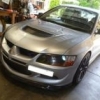Wolf 3D V4 vs PowerFC
Announcements
-
Similar Content
-
Latest Posts
-
More than anything, it sounds like its time to urgently change that transfer case fluid, it takes a good synthentic auto trans fluid like Castrol Transmax Z
-
I had a 1981 ALFA with an electronic speedo sender that would work for months at a time, and also noth work for months at a time.
-
By aznriptide859 · Posted
Yes the gear for the R33/34 is different, it is red and has a different number of teeth. My part didn't come with that gear though, so I don't know how many teeth are on the red one. You'd have to reuse the 260RS/R33 gear, as long as it's not destroyed. Haha, as unfortunate as that might be it was working fine for about the first 1500km I've had the car for now. -
Update all thanks to the workshop manual, it lead me back to checking fuses as mentioned central locking and door open lights worked when acc was switched on. diagram attached shows two points of power 1. ACC and 2. Batt with the later being fused (#28) I did check the fuses using a multimeter but I must have stuffed that up also. Went back and checked the batt fuse in interior fuse box and you wouldn’t believe it… a blown fuse. replaced fuse and everything is now working as it should including the climate control thank you all with your positive insight and knowledge.
-
Where is the warning "That this thread is super old" I just went into a 5 year old thread, went to do a reply, and couldn't see anywhere obvious a warning of it being super old
-





Recommended Posts
Create an account or sign in to comment
You need to be a member in order to leave a comment
Create an account
Sign up for a new account in our community. It's easy!
Register a new accountSign in
Already have an account? Sign in here.
Sign In Now